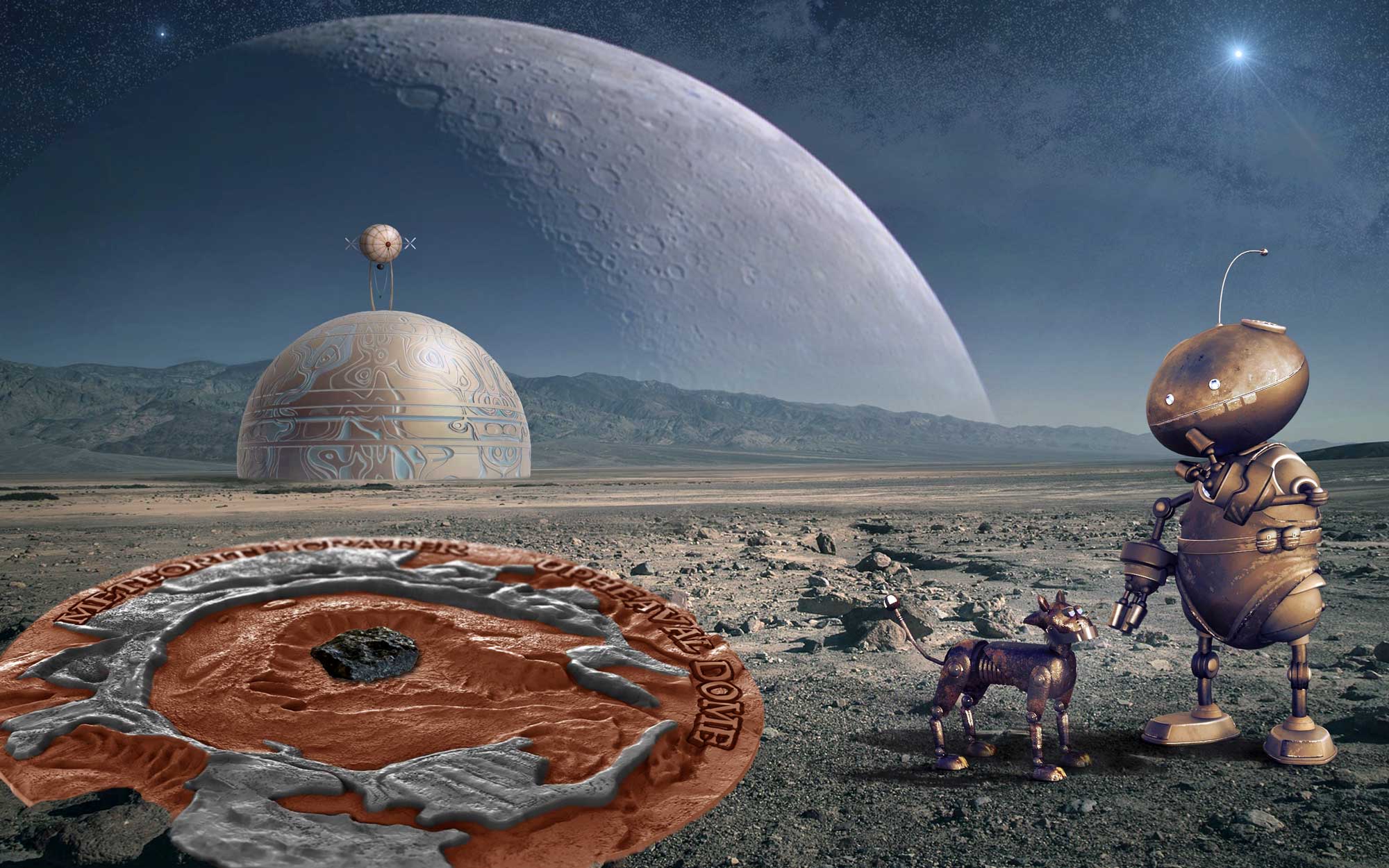Sixth in the Mint of Poland’s excellent meteorite series features the ancient Upheaval Dome impact site
Some of our favourite coins of the last few years have been those featuring meteorites. Always an interesting subject anyway, the combination of geological design and meteorite fragment has certainly gained its fanbase. Several producers have dabbled in the market, but the two big guns are CIT Coin Invest, who have been issuing these for over a decade, and more recently, the Mint of Poland.
The Mint of Poland, through Pela-Coins, have been issuing a very cool series of one-ounce silver coins with differing designs since 2014. Diablo Crater was a hit and was followed by equally popular Wolfe Creek, Popigai, Gosses Bluff, and Pingualuit Crater coins. Now it’s time for the sixth release and it’s back to the United States for one of Earth’s ancient impact craters, Upheaval Dome. Possibly over 150 million years old – remember, the one that possibly killed off the dinosaurs was ‘only’ 65 mya – , this is still nowhere near the oldest, with a recently discovered crater in Greenland of huge size (62 km across) being dated at over 3 BILLION years ago. Nevertheless, what Upheaval Dome lacks in ultimate age, it certainly makes up in drama. It resides within Canyonlands National Park in Utah.
This coin series has seen some changes in appearance over the six issues. Early coins had some light copper plating, Popigai was colour-antiqued, and Gosses Bluff was fully copper plated. This one is copper plated with unplated highlights. The mint chooses what looks best and as you can see from the images of the actual site, they’ve chosen well this year. As you’d expect, this is an ultra-high relief strike, which is something that is almost de rigueur for the correct look. A meteorite fragment sits in the centre, although this is from the Dalgety Down strike in Australia. Given that Upheaval Dome has only recently been confirmed as being from a strike instead of a salt dome, the lack of actual site material is understandable.
It’s a Niue Issue, so the effigy (by Ian Rank Broadley) sits in the centre of the obverse and has that neat textured border that the Mint of Poland is increasingly using for its Niue coins. All of this face is copper-plated. Packaging comprises the usual wooden box in a themed shipper sleeve, and a certificate of authenticity is included, of course. Just 666 of these will be minted and they should start shipping in December. We’ve great admirers of this series, although I’m biased as I did study geology many years ago. There are plenty of subjects for future coins – the Earth Impact Database currently lists 190 confirmed strikes…
UPHEAVAL DOME
Upheaval Dome is an impact structure, the deeply eroded bottom-most remnants of an impact crater, in Canyonlands National Park southwest of the city of Moab, Utah, in the United States. The crater is located in the Island in the Sky section of the park, and is approximately 67 km by vehicle from Moab.
It is approximately 5 km in diameter and the crater is known to be less than 170 million years old (Jurassic or younger, but how much younger is not established.) The crater is clearly visible on the surface as bright brown and black concentric rings.
Stratigraphically, the oldest formation exposed in the center of the dome is the Permian Organ Rock Shale. This is overlain by the Permian White Rim Sandstone. Both are sometimes considered part of the Cutler Formation. Overlying these are the Triassic Moenkopi Formation (which is bounded top and bottom by unconformities), the Chinle Formation, the cliff-forming Wingate Sandstone, the Kayenta Formation, and the crossbedded Triassic-Jurassic Navajo Sandstone.
Structurally, the dome is anomalous. Most of the rock strata of Canyonlands National Park are flat-lying or gently dipping. The center of the structure is a true dome. Some strata near the center are nearly vertical in orientation. Dips of 70 degrees have been measured in the Kayenta Formation on the U-shaped plateau surrounding the center of the structure. A syncline surrounds the center, where the axis forms a complete circle approximately two miles across. The syncline is primarily visible in the Navajo Sandstone. Another anticline has been mapped to the north of this ring syncline, which is also concentric with it.
There were two well-known theories as to the origin of the upheaval. One theory was the upheaval is a salt dome, an anticlinal structure which occurs when a salt diapir is pushed up by the weight of overlying rocks.
The other theory is an eroded impact crater, like the much younger Meteor Crater near Winslow, Arizona. In the 1990s, a team of geologists and seismologists from NASA and the University of Nevada at Reno performed a detailed study that included seismic refraction and rock mapping. The results of this study support the meteorite theory. In 2008, it was announced that shocked quartz was discovered. This confirmed the meteor impact theory because the rocks were subjected to high pressures only possible in an impact or a nuclear explosion. (Text & Images courtesy of Wikipedia)
| SPECIFICATION | |
| DENOMINATION | $1 New Zealand (Niue) |
| COMPOSITION | 0.999 silver |
| WEIGHT | 31.1 grams |
| DIMENSIONS | 38.61 mm |
| FINISH | Antique |
| MODIFICATIONS | High-relief, Copper-plating |
| MINTAGE | 666 |
| BOX / COA | Yes / Yes |







Leave A Comment